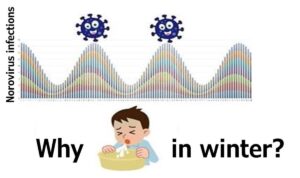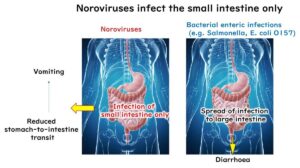Norovirus and Hepatitis Viruses
Explore the category centered on Norovirus, a leading cause of gastroenteritis outbreaks, alongside Hepatitis A and E viruses. This section delves into their transmission pathways, survival mechanisms, prevention strategies, and detection techniques, with a focus on food safety, water systems, and hygiene practices in foodservice environments.
Why Norovirus Peaks in Winter — The Hidden Role of Absolute Humidity
In temperate regions, bacterial food poisoning incidents typically peak from early summer to autumn. This surge is due to the favourable warm temperatures that facilitate the growth of pathogenic bacteria in food. Conversely, norovirus infections are more prevalent in winter. Why is this? Is it because we eat oysters in winter? Does the virus become more potent in the cold? Until recently, the scientific data was insufficient to provide clear answers. However, the study we are discussing in this article offers a potential explanation.
Norovirus and Asymptomatic Carriers: A Hidden Risk in Food Handling
It’s possible for healthy, asymptomatic food handlers infected with norovirus (asymptomatic carriers) to spread the virus, making them potential infection sources. However, there’s a lack of systematic research on the viral load, excretion amount, and duration in the stool of these asymptomatic carriers and their individual variations. Let's dive into the study by Dr. Teunis and his team from the Epidemiology Research Division in the Netherlands.
Norovirus: Characteristics, Transmission Routes, and Effective Prevention
Discover how noroviruses impact food safety through their unique characteristics and surprising survival strategies. This article explores their transmission routes, resilience, and practical methods to prevent norovirus food poisoning.


